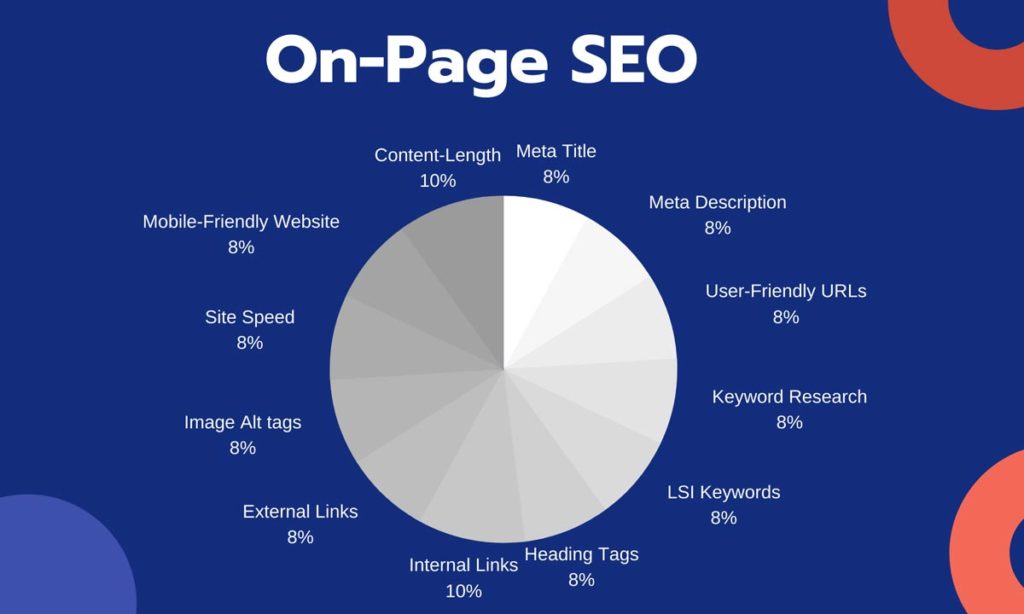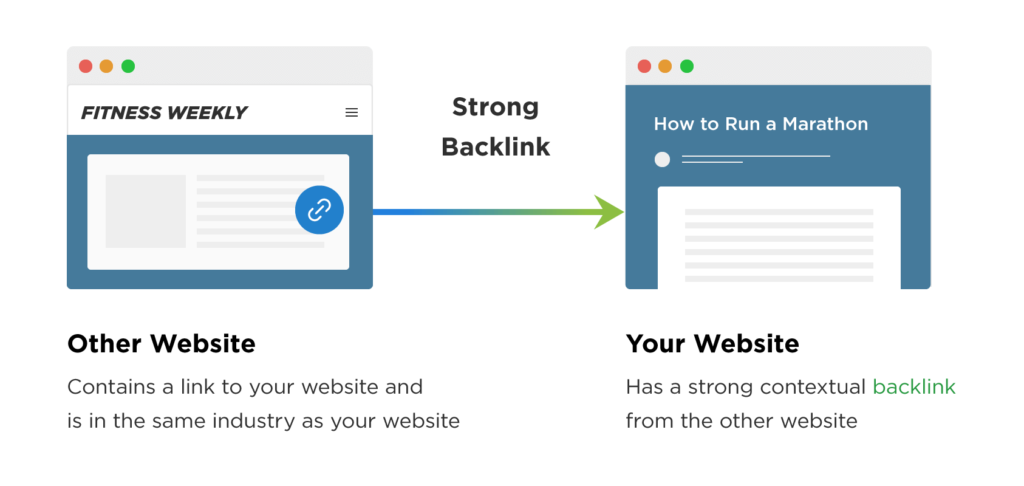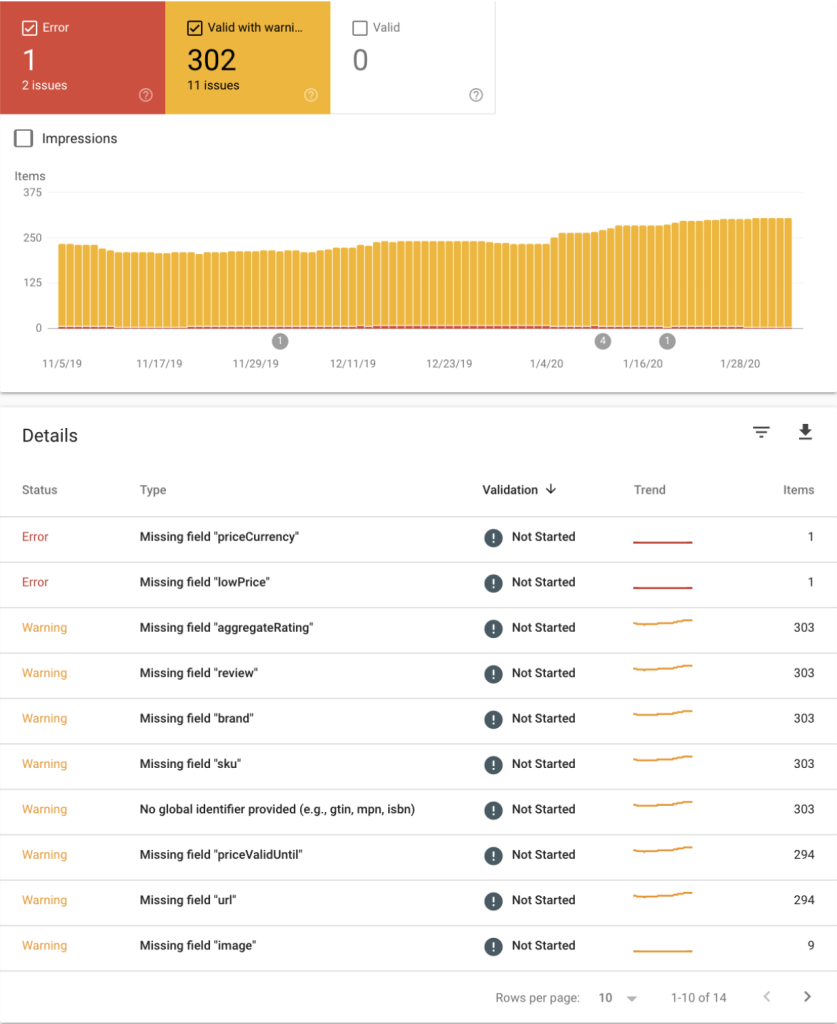6 eCommerce SEO Trends You Should Know for Holiday Marketing
The holiday season has arrived, and businesses are readying themselves for the surge in web traffic that comes with it. Thanks to the Covid-19 pandemic, consumers are more likely than ever to do their holiday shopping online.
This is great news for eCommerce stores but keeping track of the latest SEO and marketing trends to ensure your business remains competitive isn’t a simple task.
This guide will discuss the six eCommerce SEO trends you should know for the holiday marketing season to help boost conversions and maximise sales. However, before we dive into the latest trends, let’s talk about the importance of SEO for eCommerce businesses.
Table of Contents
SEO and eCommerce
An eCommerce store has little chance of serious growth if it is not a search engine optimised to a suitable standard. This section will look at the primary considerations when optimising your eCommerce website for SEO and the importance of doing so.
On-Page SEO

On-page SEO involves keywords and their correct usage, making it clear to search engines what the content of your website and its pages is about. Conducting thorough keyword research and using them effectively can help your eCommerce store achieve high rankings on search engine results pages (SERPs).
It is vital to balance choosing keywords that aren’t overly competitive and those that still receive regular search queries. Below is a quick guide on creating an effective keyword strategy for the current holiday season.
- Focus on choosing the right keywords. This seems obvious, but too many marketers focus on keywords that are usually too difficult to rank for. When choosing your keywords, use tools like Ahrefs and Google Keyword Planner to build a realistic keyword list that identifies valuable niches.
- Study your competitors. If you have many competitors performing better in the SERPs than your store, it can’t hurt to look at their product and category pages to see what terms and phrases they are using.
- Conduct keyword research using Amazon. Amazon can be an excellent resource for identifying keywords that translate to a high probability of buying intent. Type your core keywords into the Amazon search bar and take note of the autofill suggestions. Alternatively, you could also use the Amazon Keyword Tool on Ahrefs.
When optimising your product pages, you should place your target keyword in the:
- URL
- Page title tag <H1>
- In the body of the page
- In the image alt text
- In the meta description
However, product pages are only one part of the jigsaw. To ensure your website is as competitive as possible, you must also have high-quality content incorporating targeted keywords. Engaging and informative blog posts are one of the best ways to drive website traffic and build quality backlinks.
Technical SEO
As well as keywords and content, you also need to ensure the technical aspects of your website are up to scratch. Here is a quick technical SEO checklist to help you conduct a thorough audit:
- Consider the navigation and structure of your website – is it user-friendly?
- Create a sitemap.
- Analyse your page speeds using tools such as GT Metrix.
- Assess your hosting to ensure your package offers suitable speed and performance. For example, a shared hosting plan is usually enough for a small eCommerce store, but a dedicated server might be better if your website has thousands of pages.
- Tidy up your redirects.
- Place internal links on your pages to appropriate locations.
- Install an SSL Certificate and increase web security.
- Make sure your website performs well on mobile and is fully responsive.
- Get rid of any duplicate content.
- Use Hreflang tags if there are multiple language versions of your website.
- Use Canonical tags to point search engines to your important pages.
Conducting a full site audit at least twice a year is recommended. Doing so in the lead-up to the holiday season is necessary to ensure everything works as it should.
Link Building

The user experience, great content, and high-quality links are the three most important factors for search engines when ranking websites. This is why your link-building strategy must be considered, even if it is time-consuming.
Let’s consider the five primary methods for building backlinks.
Resource Pages
Resource pages specific to your niche are a great place to obtain good, relevant backlinks. This could be a static page on a related website or a part of a blog post.
A quick way to find appropriate resource pages is by entering “inurl: resources + “your industry or niche” in the Google search bar. Once you have found relevant pages, contact the author or webmaster to inform them about your website.
Broken Links
Extensions such as Check My Link will highlight broken links on relevant blogs and resource pages. This allows you to inform the web admins of the issue and ask them to consider replacing the broken link with a link to your website.
Influencers
Influencer marketing is vast, but regarding SEO, you request a link on the influencer’s blog or website instead of paying them to promote your products or brand on social media. Blogs owned by popular influencers likely have high domain authority, making them highly sought-after links.
Guest Posts
Guest posts can help to create relationships with thought leaders and experts within your industry. Getting in touch with editors of high-ranking websites with potential article ideas you can write for them is one of the most effective link-building methods today.
Check Your Competitors
Competitor analysis is a big part of SEO, and by using Ahrefs or Semrush, you can check where your key competitors are getting their backlinks so that you can get in on the action too.
Now that we have recapped how SEO is essential to a successful eCommerce store let’s take a look at some of the things we have learned in recent years and during the Covid-19 pandemic.
What Have We Learned From eCommerce SEO Trends in the Past?
The Covid-19 pandemic resulted in a significant change in online consumer habits, leading to several trends that are still present today. Online shopping saw astronomical growth, with many people prefer buying products on their phones or laptops instead of making a trip to the mall.
Even two years on, Covid-19-related search queries are commonplace as people still keep tabs on infection rates and the possibility of potential lockdowns. Covid-19 content remains relevant, whether it is a blog post relating to statistics over the last two years or content focused on new hobbies and interests that developed during the pandemic.
Local search has also seen significant growth over the last few years as more and more people are looking to support independent, local businesses. This is great news for eCommerce stores that serve specific regions, allowing them to compete against big brands.
When conducting your site audit, ensure your content is optimised for local search to take full advantage of Google’s algorithm changes and give more visibility to your brand.
Recent years have also shown us the importance of “Evergreen Content.” This is content that does not go out of style or become irrelevant and can be updated whenever needed. This content can generate consistent traffic for a year, two years, or more. “How-to” guides are some of the best examples of this kind of content.
6 eCommerce SEO Trends You Should Know for the Holiday Marketing Season
We have covered the fundamentals and looked at the changes over the last few years. So now, let’s return to the present and look at SEO trends for the holiday marketing season.
1 – Brands and Publishers Are Proving To Be Strong Competition for Retailers
In years past, the main concern for retailers regarding SEO was achieving better rankings and more visibility than other retailers. But now, they have to compete with a range of websites that provide valuable content to consumers:
- Brands have certainly taken a different approach over the years regarding what their websites offer. In the past, brands used their websites as promotional tools. Now, many feature online stores that target the consumer directly, providing intense competition to retailers selling the same product. Consumers often feel much more confident when buying directly from the brand.
- Publishers compete with retailers for solid positions on search engine results pages. Whether they provide helpful product reviews, comparisons, or educational content, Google and other search engine algorithms often favour high-authority sites, primarily if this content is aimed at specific regions.
Regarding the top eCommerce keywords, retailers occupy 57% of the SERPs, down from 70% in 2020. Meanwhile, brands own 23%, up from 18% since 2020, and publishers have an 11% share, up from 4% in 2020.
2 – eCommerce Is Still Driven by Content

Google will always place colossal importance on high-quality, engaging content. Although the overall impact of the search engine’s “Helpful Content” update is still unknown, it indicates that diverse content is the way forward.
Content diversification gives eCommerce websites the best chance of performing well within the SERPs. Besides informative product descriptions, web pages need an engaging copy, and blog posts must cover various topics and formats. This also includes incorporating high-quality visuals and videos and creating unique content such as podcasts, webinars, and other downloadable content.
For an eCommerce store to be successful, the content it provides must be valuable to the user and easy to find. You can achieve this by offering unique insights into the products and organising categories, making them easy to search and navigate.
3 – Google’s First Ten Blue Links Should Still Be the Target
For many marketers, the Holy Grail of Google is Position Zero, the featured snippet for a targeted search query. However, introducing Position Zero, Local Packs, and the “People Also Ask” results does not mean the first ten blue links on a Google SERP have lost their value. Those classic blue links still receive the majority of the clicks on Google.
The prominence of video and image carousels on Google SERPs has declined in the past two years, while the number of times Local Packs are displayed has also dropped from 25% to 19%. Although popular, the “People Also Ask” results have only seen a marginal increase in the last few years.
In summary, your SEO strategy should target each type of Google search result, but the blue links should be your primary focus this holiday season.
4 – Focus on Article and Category Pages
Regarding click-through rates, category pages have been shown to receive the highest volume. In contrast, articles relating to a specific product often have a higher click-through rate than the actual product page.
Below are 12 tips on how to create a winning category page:
- Add visuals to instantly confirm to the user that they have landed on the right page.
- Create a simple layout using rows and columns.
- Sort products by popularity as the default option.
- Include on-page filters that are easy to find and use.
- Include a range of sorting options based on price and colour.
- Use segmentation to offer a different experience to multiple customer types.
- Implement product recommendations and product discovery.
- Leverage user reviews and ratings.
- Use A/B testing to increase conversions.
- Offer a personalised experience to individual users.
- Opt for pagination over an infinite scroll feature.
- Include essential product information to encourage clicks.
5 – Schema Markup for eCommerce Is Showing Consistent Growth

The use of schema is becoming much more prominent in eCommerce, with retailers, brands, and publishers all incorporating a range of schema to markup content aimed at consumers.
Schema markup is code placed on a website to assist search engines in displaying informative content to its users. Rich snippets are an obvious example, providing well-structured and easy-to-read content that the user can digest quickly.
Schema Usage for eCommerce Sites
There are hundreds of schema markup types, but for eCommerce, Product, ImageObject, and ItemList are the most relevant. Such markup can give retailers a significant edge over their competitors in the SERPs.
- Product Schema enables developers to add specific product information to product listings (such as a list of specifications) that can appear as a rich snippet.
- ImageObject Schema relates to a coded description of an image or an embedded media object. This includes image ID referencing.
- ItemList Schema markup is used to list items. A list can be related to anything but should always be the same schema type.
6 – Region-Specific Pages Can Yield Impressive Results
Discover that many of your regular customers are based in a specific region. Creating landing pages at that locality can help maximise conversions and create a personalised experience that encourages customer loyalty.
This could be a category page aimed at a specific city or promoting products people regularly purchase within the area. Not only can this help to boost your chances of performing well in local searches, but it can also help to build trust among customers in this region.
Other Important (Non-SEO) Marketing Trends To Consider for the Holiday Season
We’ve looked at six key trends in terms of SEO, but what about the broader marketing trends for this upcoming holiday season?
1 – Promotions

The global inflation levels will make money tighter for some households, likely resulting in people looking to uncover a bargain. This is why promotions such as coupons, discounts, giveaways, online games, and competitions are expected to be very popular for the remainder of 2022 and the start of 2023.
For your eCommerce store, consider a limited-time-only discount code or a social media competition to win one of your latest products. In these testing times, people may also need to turn to personal loans to cover their holiday spending, so “Buy Now, Pay Later” promotions are also likely to become commonplace.
2 – Increase the Length of the Holiday Season Window
In 2022, insights have shown that people start holiday shopping much earlier than usual. It would be best if you launched your marketing campaigns earlier to increase the length of the holiday season window.
We’ve all heard of Black Friday and Cyber Monday, but did you know the Chinese shopping holiday, Single’s Day, is also gaining popularity in the US and worldwide? It’s one of the world’s most significant shopping events, with more sales than Black Friday and Cyber Monday combined. The event takes place on November 11 and should be included in your marketing calendars.
3 – First-Party Data
As data compliance has become increasingly strict, it is crucial that marketers, especially those operating in the eCommerce sector, use their first-party data instead of making assumptions based on the anonymous information gathered by third-party cookies.
The use of data collected and owned by eCommerce businesses is expected to be the primary data source to help retain existing or lapsed customers. This differs from focusing strategies to attract new customers, which can come at a high cost.
First-party data includes email addresses, purchase histories, and website preferences which can all be used for a successful remarketing campaign or to build segmented mailing lists that directly target old customers.
4 – Live Streaming
During this holiday season, we can expect lots of social selling, with a rise in live stream shopping, allowing the audience to purchase directly from a live feed. This is not just an engaging way to sell products, but it can also be very persuasive in giving customers the final push to buy a product they have been watching for days, weeks, or months.
Live streaming is an excellent approach if you already have a successful in-house sales team comfortable in front of a camera. You can also use various platforms to deploy such a strategy, including Facebook, TikTok, Instagram, and Amazon Live.
Not all of the trends above may apply to your eCommerce business. Still, it is crucial to assess the options that can take your business to the next level, maximising profits and establishing a recognisable brand.
Failing to keep up with developing trends can mean you miss out on future customers. It may also prevent you from retaining your existing customer base, who may switch to competitors who better cater to their needs.
Wrapping Up
SEO and marketing trends for the holiday season have changed a lot in recent years, and many new developments need to be considered if your eCommerce store is to have a successful holiday season.
From local SEO to diversified content, your marketing strategy needs to consider various factors to ensure it is capable of meeting your conversion targets and is robust enough to drive sales throughout the season.
Overall, marketing trends such as live streaming have also given eCommerce businesses food for thought, as changes in consumer habits and technological improvements provide additional platforms to help promote and sell products.
A lot can happen in 12 months, so you can be sure there will be new trends and technological developments by the time the next holiday season comes around. As ever, this means more opportunities for pro-active eCommerce stores.
